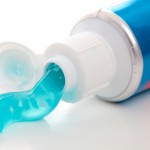
Chlorhexidine gluconate has a broad spectrum of antibacterial activity and has been shown to suppress the growth of bacteria present in plaque. It may therefore be helpful in the prevention of caries and has been included using in professionally administered products as been some over the counter preparations.
The aim of this Cochrane review was to assess the effects of chlorhexidine-containing oral products (toothpastes, mouthrinses, varnishes, gels, gums and sprays) on the prevention of dental caries in children and adolescents.
Methods
Searches were conducted in the Cochrane Oral Health Group Trials Register, the Cochrane Central Register of Controlled Trials (CENTRAL), Medline, Embase, and CINHAL databases and the journals Caries Research, Community Dentistry and Oral Epidemiology, Journal of Dental Research, Journal of Dentistry for Children, with no restriction on age of publication or language.
Parallel-group, randomised controlled trials (RCTs) that compared the caries preventive effects of chlorhexidine gels, toothpastes, varnishes, mouthrinses, chewing gums or sprays with each other, placebo or no intervention in children and adolescents were considered. Two reviewers independently selected studies, abstracted data and carried out risk of bias assessments. The primary outcome measures were caries increment at the dentine level and Mutans streptococci as a dichotomous outcome (present/absent; high/low). Standard Cochrane approaches for data analysis were followed.
Results
- 8 RCTs were included, 6 were at high risk of bias and 2 at unclear risk of bias overall.
- 6 RCTs compared chlorhexidine varnish with placebo or no treatment, 2 trials were in primary teeth involving a total of 471 children, 5 studies involving 1232 children reported effects on the permanent dentition
- 2 permanent dentition trials were pooled (one study using 10% chlorhexidine and the other, 40%). This led to an increase in the DMFS increment in the varnish group of 0.53 (95% confidence interval (CI) -0.47 to 1.53.
- Only one trial (10% concentration chlorhexidine varnish) provided usable data for elevated mutans streptococci levels > 4 with RR 0.93 (95% CI 0.80 to 1.07, 496 participants;
- One trial measured adverse effects (for example, ulcers or tooth staining) and reported that there were none; another trial reported that no side effects of the treatment were noted.
- No trials reported on pain, quality of life, patient satisfaction or costs.
- 2 trials involving a total of 490 children compared chlorhexidine gel (0.12% concentration) with no treatment in the primary dentition.
- The risk ratio for caries incidence (RR= 1.00, 95% CI; 0.36 to 2.77)
- For the prevalence of mutans streptococci (RR =1.26, 95% CI; 0.95 to 1.66
- Both trials measured adverse effects and did not observe any.
- The body of evidence was assessed as very low quality.
Conclusions
The authors concluded:
We found little evidence from the eight trials on varnishes and gels included in this review to either support or refute the assertion that chlorhexidine is more effective than placebo or no treatment in the prevention of caries or the reduction of mutans streptococci levels in children and adolescents. There were no trials on other products containing chlorhexidine such as sprays, toothpastes, chewing gums or mouthrinses. Further high quality research is required, in particular evaluating the effects on both the primary and permanent dentition and using other chlorhexidine-containing oral products.
Comments
The authors note that the different formulations of chlorhexidine products used meant that only a small number of studies could be pooled. They also highlight the limited reporting of adverse effects, (only 50% of the included studies) despite known adverse events ranging from staining and taste disturbances to anaphylaxis. The authors also point out that this review agrees with the majority of reviews previously published on this topic and that the use of chlorhexidine containing products for caries is not recommended in a number of high profile clinical guidelines published since 2008 (see links). I would agree with the authors’ view that given the good evidence available from Cochrane reviews for topical fluorides and fissure sealants for caries prevention this review does not provide any indication that chlorhexidine products present an alternative. See also The Cochrane Oral Health Group (COHG) blog on this review.
Links
Walsh T, Oliveira-Neto JM, Moore D. Chlorhexidine treatment for the prevention of dental caries in children and adolescents. Cochrane Database of Systematic Reviews 2015, Issue 4. Art. No.: CD008457. DOI: 10.1002/14651858.CD008457.pub2.
Delivering better oral health: an evidence-based toolkit for prevention, Public Health England
Guidelines on Prevention of Early Childhood Caries, European Academy of Paediatric Dentistry
COHG – Not enough evidence to recommend chlorhexidine treatment to reduce tooth decay in children

Chlorhexidine varnishes and gels for caries prevention? http://t.co/gRLnXKCSDO
Caries: little evidence to support use of chlorhexidine varnishes or gels for prevention http://t.co/1ISsmwCVqH
RT @TheDentalElf: little evidence to support chlorhexidine varnish for caries prevention http://t.co/1EVS5PsNrM
RT @TheDentalElf: little evidence to support chlorhexidine gel for caries prevention http://t.co/E4q3SGvKOz
Don’t miss -Chlorhexidine varnishes and gels for caries prevention? http://t.co/6F2GHS2w3K
[…] Dental Elf – 16th Apr 2015 – Caries: little evidence to support use of chlorhexidine varnish… […]